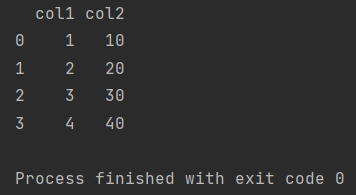Pandas is a powerful Python library for data analysis. It provides a variety of functions for manipulating and analyzing data, including the ability to cast columns to different data types.
In this article, we will learn how to cast a column in a Pandas DataFrame to a string type. This can be useful for a variety of tasks, such as formatting data for printing or saving, or for performing operations that are only supported on string data types.
How to Cast a Column to String in Pandas
To cast a column to a string type in Pandas, you can use the astype() method. The astype() method takes a data type as its argument. In this case, we will be passing the string type (str) as the argument.
For example you can cast to string using that example:
import pandas as pd
df = pd.DataFrame({"col1": [1, 2, 3, 4], "col2": [10, 20, 30, 40]})
df["col1"] = df["col1"].astype(str)
The resulting DataFrame will have the col1 column cast to the string type:
col1 col2 0 1 10 1 2 20 2 3 30 3 4 40
As you can see, the col1 column has now been cast to the string type.
Casting Multiple Columns to String Type
You can also cast multiple columns to string type by passing a list of column names to the astype() method. The following code shows how to cast multiple columns to string type in Pandas:
df[["col1", "col2"]] = df[["col1", "col2"]].astype(str)
The resulting DataFrame will have both col1 and col2 cast to the string type:

col1 col2 0 1 10 1 2 20 2 3 30 3 4 40
Avoiding Common Mistakes
When casting columns to strings in Pandas, there are a few common mistakes that you should avoid.
- Not specifying the data type
The first common mistake is not specifying the data type when you use the astype() method. This can lead to unexpected results. For example, if you do not specify the data type, the astype() method will try to guess the data type. However, if the data type is not obvious, this can lead to errors.
To avoid this mistake, always specify the data type when you use the astype() method.
- Casting columns with mixed data types
Another common mistake is casting columns with mixed data types. This can lead to errors, because the astype() method will only cast the first column to the specified data type. The remaining columns will remain in their original data type.
To avoid this mistake, only cast columns that have the same data type.
- Casting columns with missing values
When you cast a column with missing values to a string type, the missing values will be converted to the string NaN. This can be confusing, because it can be difficult to distinguish between missing values and actual strings.
To avoid this confusion, you can use the fillna() method to fill missing values before you cast the column to a string type.
